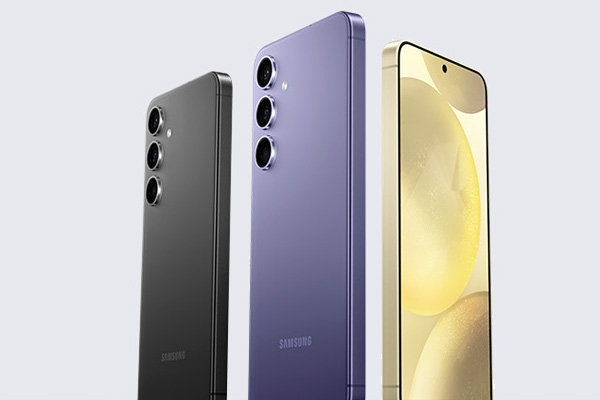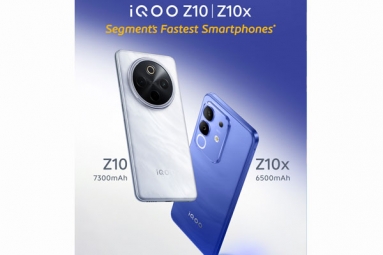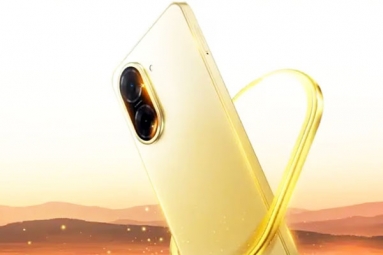
(Image source from: Samsung.com)
The Galaxy S24+ is a device that is often overlooked in Samsung's Galaxy S lineup. While the Galaxy S24+ has similar specs to the Galaxy S24, it boasts a larger display and battery. Despite this, most people are willing to pay more for the top-of-the-line Galaxy S24 Ultra. However, I've come to realize that bigger can be better after using the Galaxy S24+ for a week. The Galaxy S24+ is pricey, coming in two variants in India: a 12GB + 256GB model for Rs 99,999 and a 12GB + 512GB model for Rs 1,09,999. It is available in Cobalt Violet and Onyx Black colors, but online purchases offer exclusive finishes like Sapphire Blue and Jade Green. We received the Cobalt Violet model with 12GB RAM and 512GB storage, and the box contained the phone, paperwork, a SIM ejector tool, and a USB Type-C to Type-C cable. Design wise, it's similar to the Galaxy S23/Galaxy S22, but with a larger display.
In recent years, there have been some changes in phone design, including the use of better materials. The Galaxy S24+ has an Armor 2 aluminum frame that's stronger than its predecessor, the Galaxy S23+. Although it's bigger than the standard Galaxy S24, the phone is still comfortable to hold with one hand, especially if you have large hands. It weighs 197 grams and is 7.7mm thick, which is almost the same as the Galaxy S24. The phone feels luxurious and is durable. The front has slim bezels that are uniform in size and slimmer than last year's model. The speaker/earpiece is located in a slit at the top, and there's an in-display ultrasonic fingerprint scanner. The Galaxy S24+ has the same Gorilla Glass Victus 2 protection and IP68 rating as its smaller sibling. The back of the phone has a triple-camera system, with each camera housed in a separate metal ring. The LED flash is positioned lower than the Galaxy S23+. The only difference between the Galaxy S24+ and the Galaxy S24 is the larger battery. Equipped with the Xclipse 940 GPU, the Galaxy S23+ now boasts an increased RAM of 12GB and up to 512GB of UFS 4.0 storage, though it lacks expandable storage. Communication is made possible through tri-band Wi-Fi 6E, NFC, Bluetooth 5.3 LE, a USB Type-C 3.2 port, and GPS satellite support.
Samsung's ultrasonic fingerprint sensor is also reliable and I honestly think more smartphone brands should use this technology instead of optical sensors. It's faster, more accurate and I've never had a problem with it. The Galaxy S24 Plus has a 4,900mAh battery, which is significantly larger than the Galaxy S24's 4,000mAh battery and slightly larger than the older Galaxy S23 Plus's 4,700mAh battery. However, the phone still only supports 45W fast charging and 15W wireless charging, which is the same as last year.
What's different this year is the promise of software support, with Samsung now offering seven years of Android OS and security updates. The Galaxy S24 Plus runs One UI 6.1 based on Android 14 out of the box. The new Galaxy AI functionality is also available. You can read more about this in our Galaxy S24 test. When it comes to performance, the Exynos 2400 SoC in the Galaxy S24+ delivers the best performance in all situations. Looking at the benchmark numbers, the Snapdragon 8 Gen 3 Galaxy SoC is better, but there is no difference in daily use or gaming. I ran tests on the Galaxy S24+ and it achieved the same results as the Galaxy S24. On AnTuTu it achieved a score of 1457608, on Geekbench a single-core score of 1987 and a multi-core score of 6137. The AnTuTu score was slightly lower than the Galaxy S24, but the Geekbench score was higher. This is probably because the Plus model has more cooling surface area.
The Galaxy S24 Plus has a slightly larger 6.7-inch display compared to last year's Galaxy S23 Plus (6.6 inches). The display also features slimmer bezels and is now a 2x brighter LTPO AMOLED panel with a maximum brightness of 2600 nits and a QHD+ resolution. It still offers a 120Hz refresh rate. The screen is bright enough and easy to read outdoors. The phone features a hybrid dual-speaker setup that delivers decent bass at high volumes. The call quality is also great. Gaming on the Galaxy S24+ is the same experience as on the smaller S24. All games run on the highest settings and there is no noticeable lag. What you may notice is a fever. If you play for a long time, your phone will get a little hot. During benchmark tests, we also noticed that the phone heats up quickly. As for battery performance, the phone lasted 19 hours and 17 minutes in our HD loop test with QHD+ screen resolution. A high screen resolution puts a strain on your battery, but a lower resolution can extend battery life. With normal use, the phone easily lasted more than a day.
However, due to heavy usage, I had to charge the phone at the end of the day. If you use a 45W or higher charger and a higher power cable, it will take about 1 hour and 15 minutes to charge the phone. The phone has a 3A cable that only supports 25W fast charging. A 125 watt charger was used for the charging test. The Samsung Galaxy S24+ offers the same camera setup as the smaller Galaxy S24 we previously tested. The phone has a 50-megapixel main camera with OIS, a 10-megapixel telephoto sensor with 3x optical zoom, and a 12-megapixel ultra-wide unit with a 120-degree field of view. For selfies, it has a 12-megapixel sensor with autofocus support. To be fair, there is no difference in photo and video performance between the two phones. However, if you compare it to last year's Galaxy S23+, you'll notice slightly lower saturation and better contrast. Ultra-wide shots are good, but the autofocus still doesn't work and makes photos blurry, especially in low light. In low light conditions, night shots with the main camera are fine. Below are some sample photos to evaluate camera performance.
OnePlus 12 is a better option with a larger screen, slightly better camera, Snapdragon 8 Gen 3 SoC, larger battery and faster charging. The price is also cheaper than the Galaxy S24 Plus. The Google Pixel 8 Pro offers improved camera performance for stills, additional AI features, and a similar or better software experience. On the other hand, the Pixel 8 Pro is also cheaper and has a better telephoto camera. You can also switch to the iPhone 15 Plus. The iPhone 15 Plus doesn't have a telephoto camera, but it does have better battery life and performance. Finally, you can also try the Galaxy S23 Ultra. It offers better performance, a similarly sized display, S Pen support, a larger battery and a better camera. You can probably get a phone for around the same price as the Galaxy S24+.
The Galaxy Plus version is usually overlooked by consumers because it only offers a larger screen and battery compared to the smaller S version. That may have been the case for the past few years, but the Galaxy S24+ changes everything. It offers a better and brighter screen, improved build quality, 12GB of RAM as standard and seven years of software updates. Specs-wise, it's more similar to the Galaxy S24 Ultra, so it's a better buy if you're looking to save money but don't particularly care about the Ultra's better camera, but rather want a larger screen and battery.










